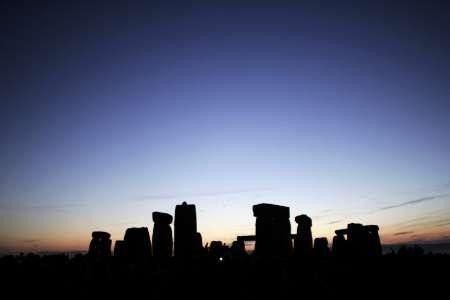Groundbreaking Discovery of New Monuments at the Stonehenge: The Mystery of the Stonehenge Could be Solved
The Purpose of the Stonehenge Can be Found Below the Ground

While the Stonehenge is one of the Seven Wonders of the World and has been an attention drawer for ages, the original purpose behind it is still unknown. A four year project called the Stonehenge Hidden Landscapes Project by archaeologist Vince Gaffney of the University of Birmingham along with the Ludwig Boltzmann Institute for Archaeological Prospection and Virtual Archaeology in Austria found 15 previously unknown Neolithic monuments around the Stonehenge site.
They found henges, barrows, pits and ditches that could all contribute to a deeper understanding and provide more information about the prehistoric mysterious site. In 2009, they conducted an underground survey with the help of magnetic radars that detected unknown structures within the famous landmark's radius. They found variations in the Earth's magnetic field.
"This is among the most important landscapes, and probably the most studied landscape, in the world," Professor Gaffney told the Smithsonian magazine. He said that after the survey, the area would not be the same again. The survey revealed that as previously thought, the Stonehenge is not an isolated monument amidst a vast landscape, untouched by human activity. In fact, there was a lot of human activity in the area.
Carbon dating revealed that the Stonehenge was present in 2,600 BC and there was human and cattle skull also buried in the centre of the stone circle. Experts have stated that the place might have been a graveyard and a place for rituals as well. Some also believe that the stone has healing and musical properties. The most intriguing fact is that the stones are aligned with the phases of the sun.
Researchers now have found that this was a busy area and they have also created a map of the archaeological wonder. The map has the location of the Stonehenge and a pathway that the people used, to cross the place called Curcus, which was two miles long and ran from east to west.
The Curcus had gaps for people to enter and exit. Professor Gaffney believes that it acted as a
"bloody great barrier to the north of Stonehenge." They also found 15 other monuments that were also aligned with the phases of the sun. Professor Gaffney stated that these gaps may have been "channels though the landscape to enable people to move north and south."
The purpose of the Stonehenge still remains a mystery; some believe it to be a graveyard, some a temple and others a parliament. There is also a belief that it could have been a place that fulfilled all three purposes. Another unique characteristic of the monument is that it is located on the path of the sunrise, which initially was thought to be a coincidence but what they found next proved that there was something more to it. Professor Gaffney explained, "Two pits, marking the midsummer sunrise and the midsummer solstice, set within a monument that's meant to be something to do with the passage of the sun." On the longest days of the year, he said that the pits form a triangle marking sunrise and sunset.
He is of the opinion that there may have been fire burning in them and it was meant to catch one's eye at any point of time in the day. The findings also suggest that the Stonehenge was at the heart of a busy commercial area. According to him, it was a 'monumentalising' of a procession.
He said, "This is fantastic stuff that's been done, and it's raised a whole series of new questions." He also said that processing and uncovering all the newly found monuments would take years.
This is a huge development towards understanding the Stonehenge, but it does not solve the mystery nor provide an explanation behind the meaning and purpose of the monument.




















